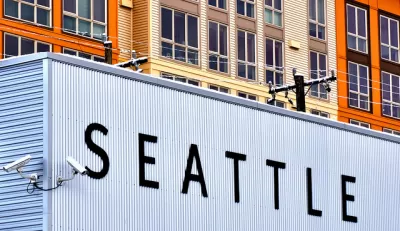Affordable housing advocates are pushing the city to use underutilized city owned property to build more housing, but it doesn't always pencil out.

The city of Seattle is sitting on 210 underutilized pieces of property that could be used for new affordable housing projects, advocates claim. Seattle Times reporter Bob Young writes that the city has looked into the potential developments, but has had difficulty making the math work. “Rents from affordable apartments would not cover the costs of developing and maintaining new buildings.”
Further, many of the sites identified by housing advocates are tied up with restrictions on uses or are just too small to accommodate the number of units that would make the development viable. Sharon Lee, executive director of the Low Income Housing Institute (LIHI), argues that the city's analysis presumes a 100 percent affordable housing development, and didn’t look at a potential mix of housing types.
Seattle Mayor Ed Murray’s staff is continuing to look at potential financing mechanisms for new housing development, including "linkage fees" on new development. A previous financing method, known as the Growth Fund, was eliminated in 2002 following the adoption of a law limiting property tax increases.
"Murray’s new development fee and his proposed inclusionary zoning — which requires new residential buildings to either include affordable units or pay a fee in lieu — are carrying out the goals of the old Growth Fund, but without using city tax revenues."
FULL STORY: Advocates push city of Seattle to use orphan properties for affordable housing

Maui's Vacation Rental Debate Turns Ugly
Verbal attacks, misinformation campaigns and fistfights plague a high-stakes debate to convert thousands of vacation rentals into long-term housing.

Planetizen Federal Action Tracker
A weekly monitor of how Trump’s orders and actions are impacting planners and planning in America.

In Urban Planning, AI Prompting Could be the New Design Thinking
Creativity has long been key to great urban design. What if we see AI as our new creative partner?

King County Supportive Housing Program Offers Hope for Unhoused Residents
The county is taking a ‘Housing First’ approach that prioritizes getting people into housing, then offering wraparound supportive services.

Researchers Use AI to Get Clearer Picture of US Housing
Analysts are using artificial intelligence to supercharge their research by allowing them to comb through data faster. Though these AI tools can be error prone, they save time and housing researchers are optimistic about the future.

Making Shared Micromobility More Inclusive
Cities and shared mobility system operators can do more to include people with disabilities in planning and operations, per a new report.
Urban Design for Planners 1: Software Tools
This six-course series explores essential urban design concepts using open source software and equips planners with the tools they need to participate fully in the urban design process.
Planning for Universal Design
Learn the tools for implementing Universal Design in planning regulations.
planning NEXT
Appalachian Highlands Housing Partners
Mpact (founded as Rail~Volution)
City of Camden Redevelopment Agency
City of Astoria
City of Portland
City of Laramie



























